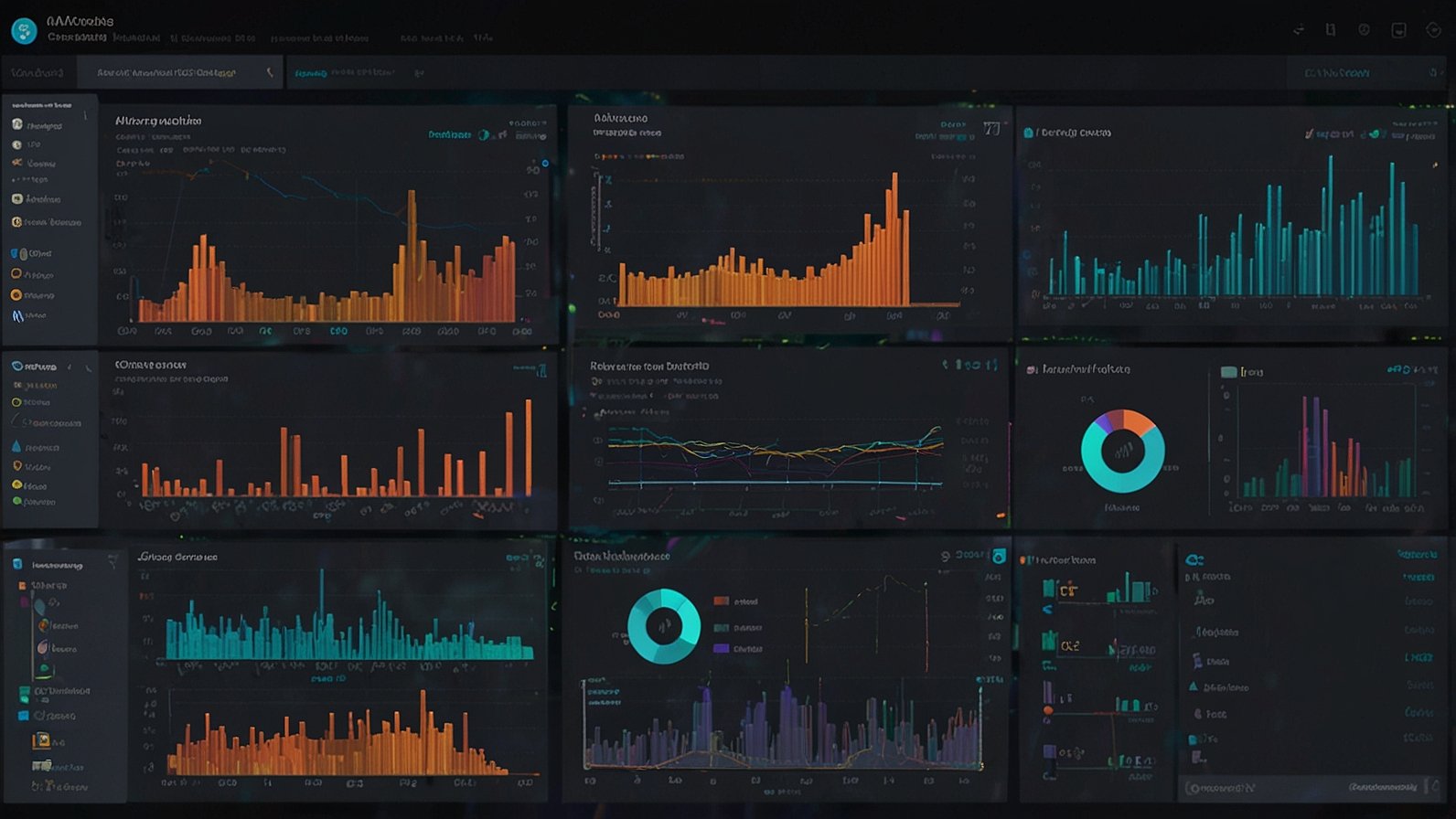Remember those frantic late nights? Coffee cups piling up, teams scrambling across spreadsheets, fingers crossed that this time, the numbers reconcile before dawn? If your month-end, quarter-end, or project wrap-up feels like a recurring stress test, you’re not alone. But what if you could flip a switch and have all that crucial closing data – the logs, the metrics, the final tallies – gathered, organized, and ready for review automatically? Enter EO PIS, your End-of-Period (or End-of-Process) Information System. Think of it as your automated, always-on closing crew, working tirelessly so you can finally breathe when the period clock stops.
Forget the manual slog. EO PIS isn’t just another software category; it’s a strategic shift. It’s about capturing the vital signs of your operational or financial run as it concludes, transforming chaos into clarity. Let’s dive into how this niche powerhouse can revolutionize your close process.
What Exactly IS an EO PIS? (Beyond the Acronym Soup)
At its heart, an End-of-Period Information System is an automated framework designed for one critical moment: the finish line of any defined operational cycle or accounting period. Its job is singularly focused:
- Capture: Seamlessly collect logs (system events, user actions), performance metrics (throughput, errors, latency), and essential business data (final sales figures, inventory counts, transaction volumes) the moment the period closes.
- Aggregate: Pull together these disparate data streams into a unified, coherent dataset. No more hunting through 12 different systems!
- Report: Instantly generate standardized reports, dashboards, or data packages tailored for the next crucial steps: audits, financial closing reports, regulatory filings, and insightful post-mortem analyses.
Imagine this: Your fiscal quarter ends at midnight. By 8 AM the next morning, your EO PIS has already delivered a comprehensive package showing system performance during the close, final transaction summaries, exception logs flagged for review, and preliminary KPIs – all before your first cup of coffee. That’s the power.
Why Your Business Desperately Needs an EO PIS (The Pain Points It Solves)
Still relying on manual pulls and heroics? Here’s what an EO PIS rescues you from:
- The Time Sink Black Hole: Teams spend days, not hours, just gathering data instead of analyzing it. EO PIS automates collection, freeing up massive resources.
- Error-Prone Spreadsheet Jockeys: Manual entry = typos, missed data, version control nightmares. Automation ensures accuracy and consistency.
- Delayed Insights: When reports take weeks to compile, opportunities for quick corrective action vanish. EO PIS provides near-instant visibility.
- Audit Anxiety: Scrambling to find evidence for auditors is stressful and costly. An EO PIS provides a clear, timestamped audit trail automatically.
- Blurry Post-Mortems: Without precise, timely data from the exact closing window, understanding what went wrong (or right!) is guesswork. EO PIS gives you the factual foundation.
Real-World Win: Global logistics firm “SwiftHaul International” implemented an EO PIS for their complex month-end freight billing reconciliation. Result? Their close time shrunk from 12 painful days to just 4, audit preparation time halved, and billing discrepancies dropped by 35% due to immediate data validation. Their CFO called it “a game-changer for sanity and accuracy.”
Building Your EO PIS: Key Ingredients for Success
Implementing an End-of-Period Information System isn’t magic, but it is strategic. Here’s what you need:
- Clear Trigger Definition: What exactly signals the “End-of-Period”? (e.g., specific time, final transaction ID, system flag).
- Data Source Integration: Connecting to relevant systems (ERP, CRM, logging tools, databases, operational systems). APIs are your friend!
- Robust Data Pipeline: Reliable tools to extract, transform (clean, format, enrich), and load (ETL/ELT) the data upon trigger. Think tools like Apache NiFi, Talend, or cloud-specific data pipelines.
- Centralized Landing Zone: A database, data lake, or data warehouse to store the aggregated closing dataset.
- Automated Reporting Engine: Tools (Power BI, Tableau, custom scripts) pre-configured to generate standard closing reports instantly. (Visual Idea: Imagine an infographic showing data flowing from source systems into a central hub when a “Period End” button is pressed, then instantly feeding out reports to Audit, Finance, and Ops teams).
- Access Control & Audit Trail: Ensuring the right people see the right data and every step is logged for compliance.
EO PIS vs. Traditional Manual Closing
| Feature | Traditional Manual Close | EO PIS Automated Close |
|---|---|---|
| Speed | Days or Weeks | Hours or Minutes |
| Accuracy | High Risk of Human Error | High, Automated Validation |
| Resource Cost | Significant Team Effort | Minimal Ongoing Effort |
| Audit Readiness | Reactive, Stressful Preparation | Proactive, Continuous Trail |
| Insight Timeliness | Delayed, Missed Opportunities | Immediate, Actionable Data |
| Scalability | Difficult, Error-Prone | Easily Handles Increased Volume |
Getting Started with EO PIS: Your Action Plan
Ready to ditch the chaos? Here’s how to begin:
- Identify Your Painful Closes: Where does the end-of-period or end-of-process hurt the most? (Financial month-end? Project milestone reporting? Batch processing completion?). Start there.
- Map the Data: List EVERY data source involved in that close process. Where does the crucial “period-end” data live?
- Define the Trigger: Pinpoint the exact, unambiguous event that marks the end. This is critical for automation.
- Start Small, Think Big: Choose one specific report or dataset to automate first. Prove the value before scaling.
- Leverage Existing Tools: You likely have ETL tools, databases, and BI platforms. Can they be orchestrated to work together at period-end?
- Prioritize Security & Compliance: Bake these in from day one, especially for financial or regulated data.
- Iterate and Expand: Once your first EO PIS flow works, add more data sources, reports, and processes.
The Future is Automated: Beyond the Basic Close
EO PIS isn’t just about efficiency; it’s about empowerment. With reliable, instant closing data, you unlock:
- Faster Strategic Decisions: Understand performance immediately, not weeks later.
- Predictive Insights: Use historical closing data patterns to anticipate and prevent future issues.
- Enhanced Compliance: Effortlessly demonstrate control and accuracy to regulators and auditors.
- Reduced Operational Risk: Catch anomalies and errors at the point of close, not months down the line.
- Happier Teams: Free your people from soul-crushing data grunt work for higher-value analysis.
Your Next Steps: Ditch the Drama, Embrace Automation
The era of the end-of-period panic is over. EO PIS offers a clear path to calm, efficient, and insightful closes. It’s not about replacing humans; it’s about empowering them with the right information at the right time.
3 Things to Try Tomorrow:
- Pick Your Pain Point: Identify one specific report or data pull that always delays your close.
- Trace the Data: Write down where each piece of that data comes from manually.
- Ask “Could This Be Automated?”: Talk to your IT or data team about the feasibility of triggering that collection automatically at period-end.
What’s the biggest headache you face when your operational or financial period closes? Could an EO PIS be the solution you’ve been waiting for?
You May Also Read: How to Collect Data in the Field: Tools, Tips, and Technologies
FAQs
Q: Is EO PIS just for finance/accounting closes?
A: No! While crucial for financial periods, EO PIS applies to any defined operational cycle end – project milestones, manufacturing runs, batch processing completions, subscription billing cycles, etc. Anywhere you need a snapshot of data “as of” a specific endpoint.
Q: Doesn’t our existing BI/reporting tool do this?
A: Standard BI tools report on data, but they usually aren’t triggered automatically precisely at the moment a period or process ends. EO PIS focuses on that specific trigger and the automated orchestration to capture and consolidate data immediately upon closure.
Q: Is implementing an EO PIS complex and expensive?
A: Complexity varies. Starting small (automating one report) using existing integration tools can be cost-effective. The ROI comes from massive time savings, reduced errors, and faster insights. Think of it as an investment in efficiency and control.
Q: How does EO PIS help with audits?
A: It provides an automated, timestamped audit trail of the exact data captured at the period-end. This ensures data integrity, reduces the manual evidence gathering burden, and demonstrates strong process controls to auditors.
Q: Can EO PIS work with legacy systems?
A: Often yes! While modern APIs make it easier, techniques exist to integrate with legacy systems (e.g., monitoring log files, database polling, screen scraping as a last resort). The key is identifying a reliable trigger and data extraction point.
Q: What’s the difference between EO PIS and real-time monitoring?
A: Real-time monitoring gives you a live pulse. EO PIS gives you the definitive, aggregated “final exam results” for a specific, closed period. They are complementary: real-time helps during the run, EO PIS provides the authoritative summary after it concludes.
Q: Who “owns” the EO PIS? IT or the Business?
A: It’s a partnership. The business (Finance, Ops, specific departments) defines what data is needed and when the period ends. IT/Data Engineering builds and maintains the automation pipeline. Collaboration is key!










